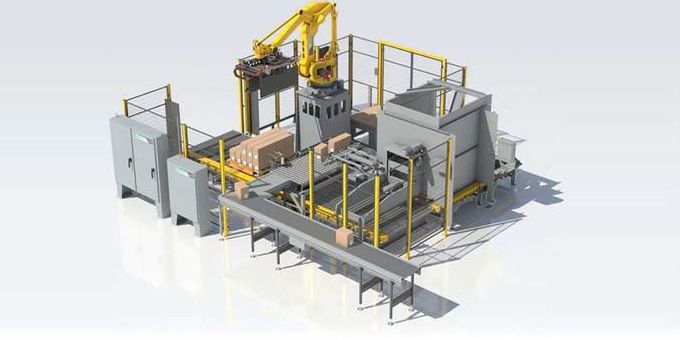The global End-of-Line Packaging Market is being driven by the increasing usage of this type of packaging system to reduce packaging costs and improve packaging systems in various end-use industries. Moreover, throughout the anticipated period, the growing implementation of automated end-of-line packaging in the industrial sector, as well as rising need for automated manufacturing processes, will drive market growth. Furthermore, the growing popularity of bottled beverages will fuel market expansion. The Global End-of-Line Packaging Market research offers a comprehensive analysis of the industry. The research includes a detailed analysis of key segments, trends, drivers, constraints, the competitive landscape, and other important market variables.
Packaging at the end of a production line From 2021 to 2028, the market is expected to increase at a CAGR of 4.25 percent, from USD 4.58 billion in 2020 to USD 6.40 billion in 2028.
Overview of the Global End-of-Line Packaging Market
During the projected period, the global end-of-line packaging market is expected to rise at a significant rate. Demand for end-of-line packaging is being driven by a growing need to improve worker conditions through automation. A wide range of end industries are using this type of packaging system to reduce packaging costs and improve the packaging system in their units. It also helps to combat the changing need for customised packaging sizes and different package forms for different commodities.

It also eliminates the need for corporations to train packaging workers every time a new packaging technology is introduced. Furthermore, the end-of-line packaging system robot system eliminates manual duties such as palletizing, packing, and sorting, minimises the risk of product damage, and eliminates human errors, all of which have aided end-of-line packaging’s popularity in manufacturing industries. Furthermore, the pharmaceutical industry’s increased adoption of innovative end-of-line packaging solutions to improve product traceability in the supply chain will propel market expansion.
On both secondary and tertiary packages, these systems can print labels containing lot numbers, product codes, timestamps, batch numbers, and global trade identification numbers (GTINs). Additionally, increased packaged beverage consumption will propel the market forward, as packaged beverages require labelling, suitable retail display packaging, casing, and cartooning in order to sell. End-of-line packaging improves product safety during transit and storage for all types of primary packaging, such as glass, cartons, and cans. During the forecast period, the End-of-Line Packaging Market will grow in tandem with the rising demand for packaged beverages.
However, the End-of-Line Packing Market’s growth is being stifled by the expensive initial investment and high maintenance costs of end-of-line packaging gear. Furthermore, the rise of the End-of-Line Packaging Market will be aided by the quick growth of the retail and e-commerce industries, the growing adoption of robotics, and the dearth of qualified labour in developing regions. Furthermore, the need to attract customer attention through appealing food packaging has shifted the focus to end-of-line packaging. Given these factors, it is reasonable to expect the global End-of-Line Packaging Market to grow at a lucrative rate, resulting in market expansion.
Market for End-of-Line Packaging by Type
• Autonomous
• Semi-autonomous
The market is divided into two types: automatic and semi-automatic. Due to the rising use of automation technology by end-use industries to minimise manpower and production costs, the Automatic segment will dominate the worldwide End-of-Line Packaging market during the anticipated period.
Market for End-of-Line Packaging by Application
• Medicinal products
• Food and Drink
• Transportation
• Compounds
• Computers and electronics
• There are others
Pharmaceuticals, Food & Beverages, Automotive, Chemical, Electronics, and Others are the different types of applications in the market. Because of the increased use of packaged beverages, the Food & Beverage category is likely to dominate the global market during the forecasted period. In addition, the pharmaceuticals market is predicted to develop significantly due to vendors’ increasing adoption of innovative End-of-Line Packaging systems to improve product traceability.
Geographical Distribution of the End-of-Line Packaging Market
• The United States of America
• The European Union
• Asia and the Pacific
• the rest of the globe
The Global End-of-Line Packaging Market is divided into four regions based on regional analysis: North America, Europe, Asia Pacific, and the Rest of the World. Because of the increased demand for varied packaging requirements for various products, the European area dominates the worldwide End-of-Line Packaging market. In addition, the rise of the pharmaceuticals, dairy, and packaging machinery industries in this region will have a substantial impact on the End-of-Line Packaging Market. Furthermore, the Asia Pacific region is likely to have tremendous growth as a result of the manufacturing industry’s rapid expansion, as well as growing urbanisation and industrialization.



